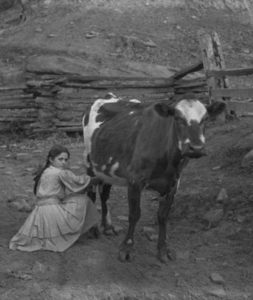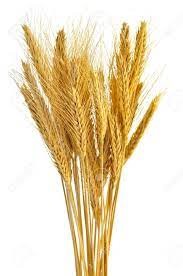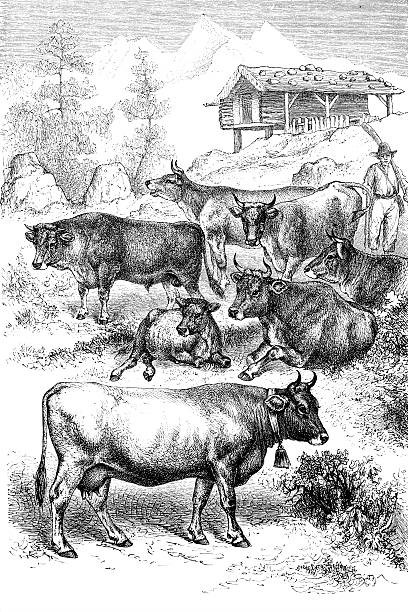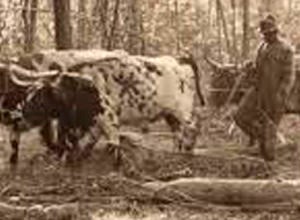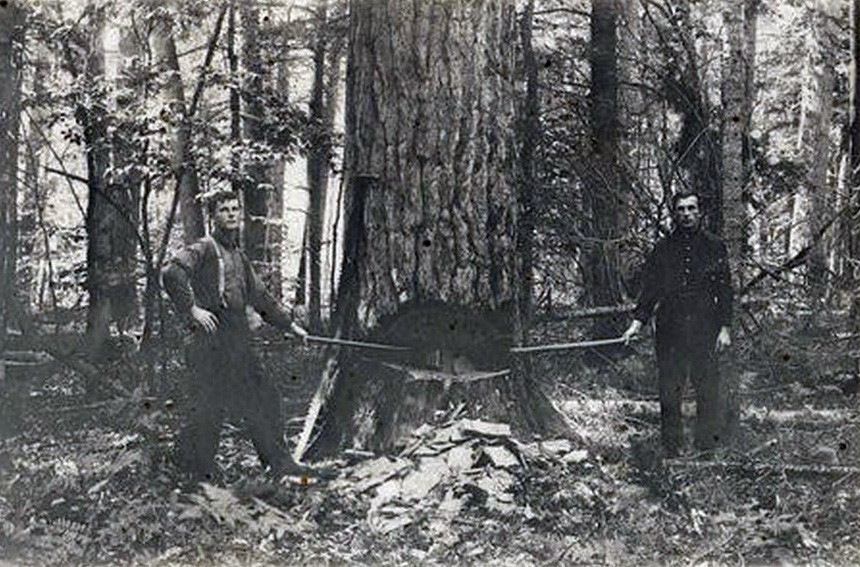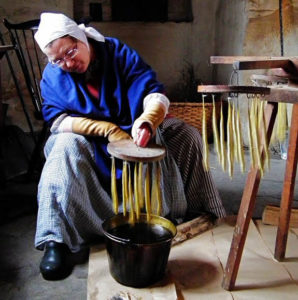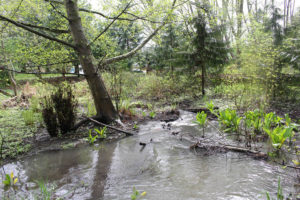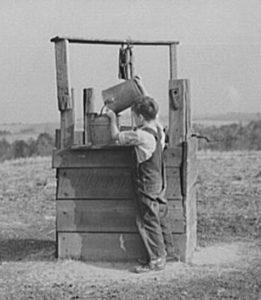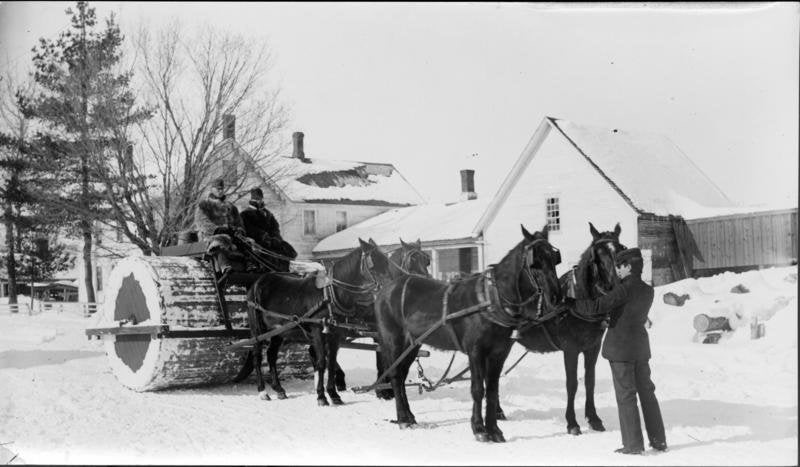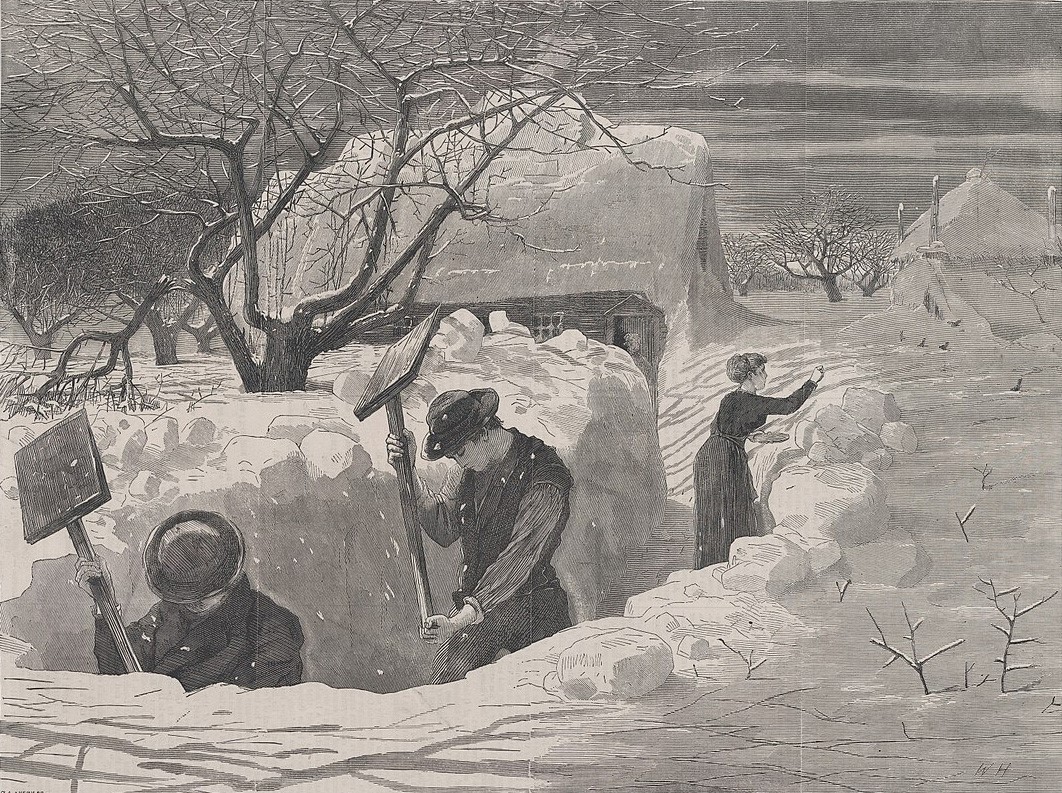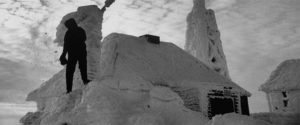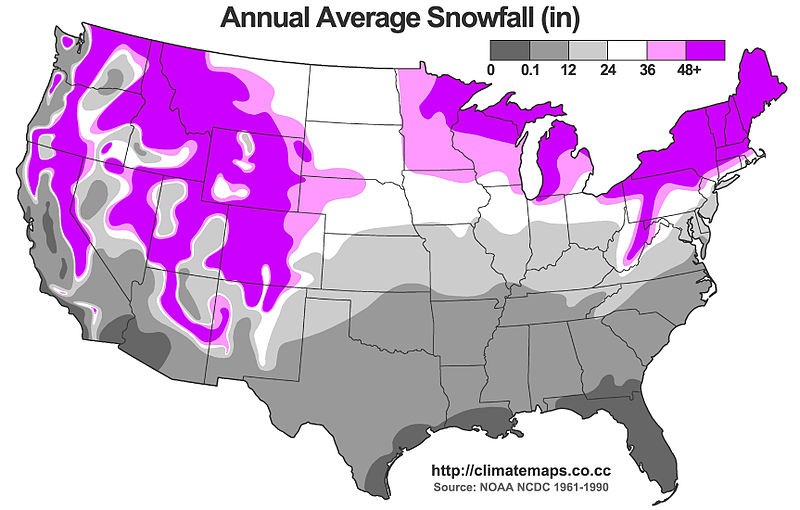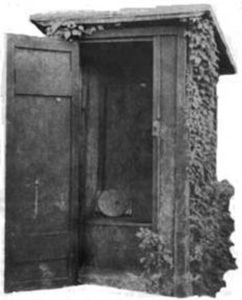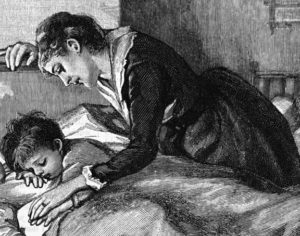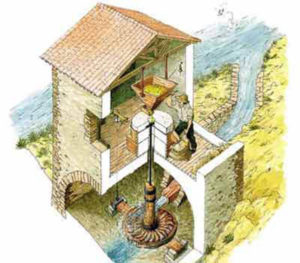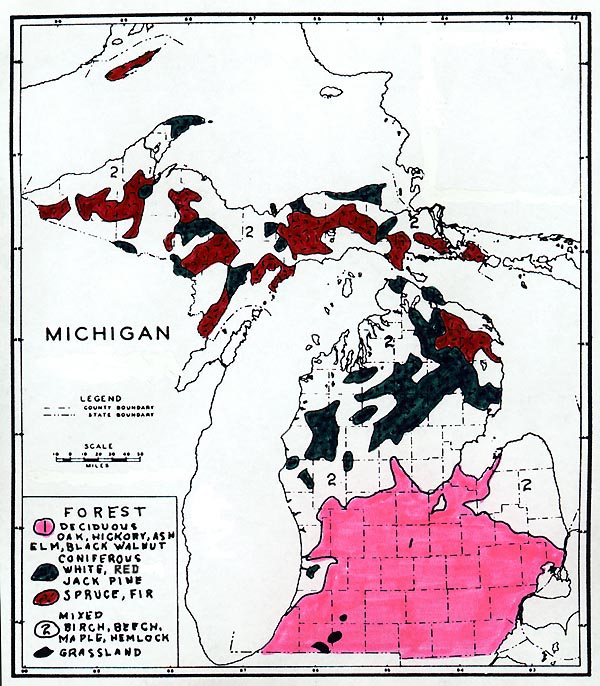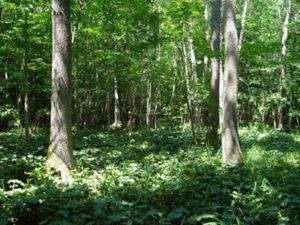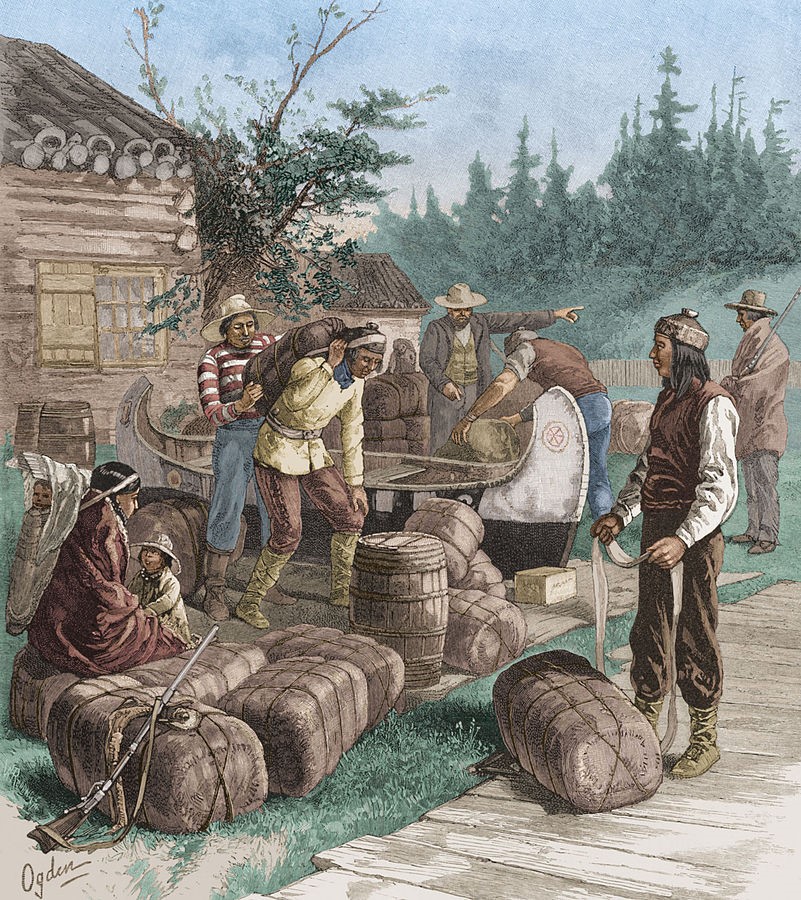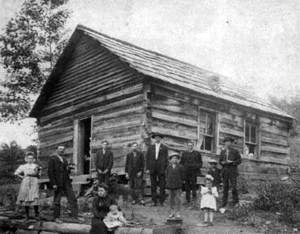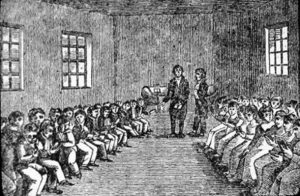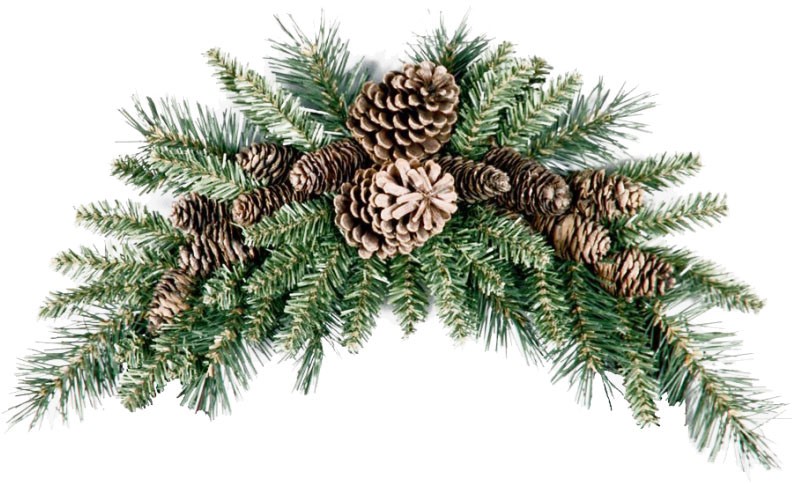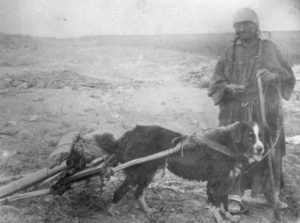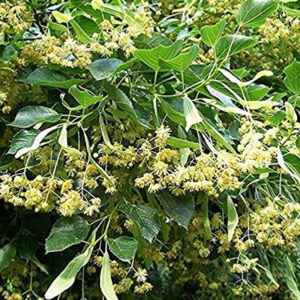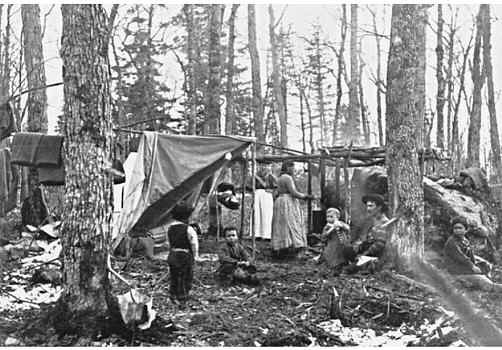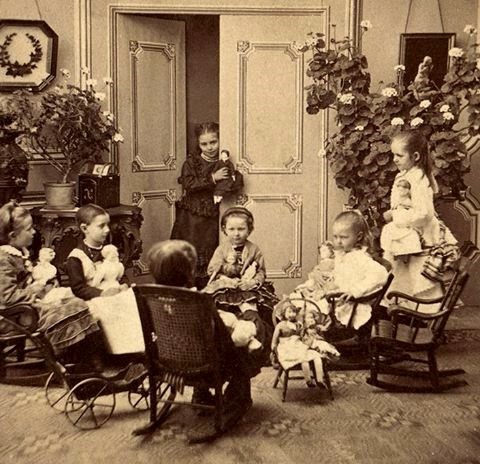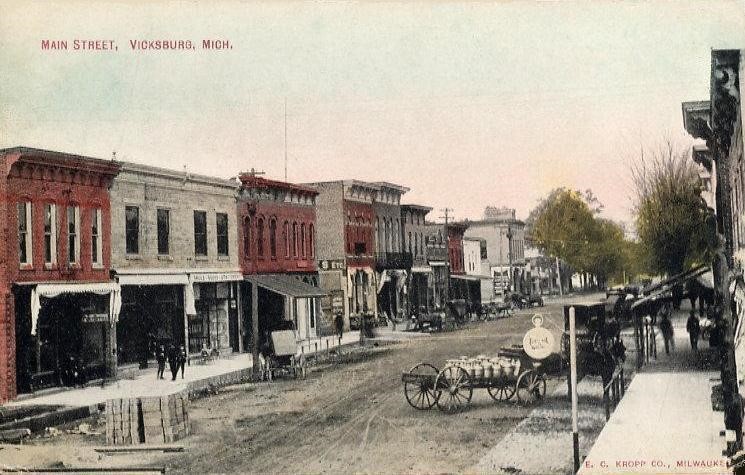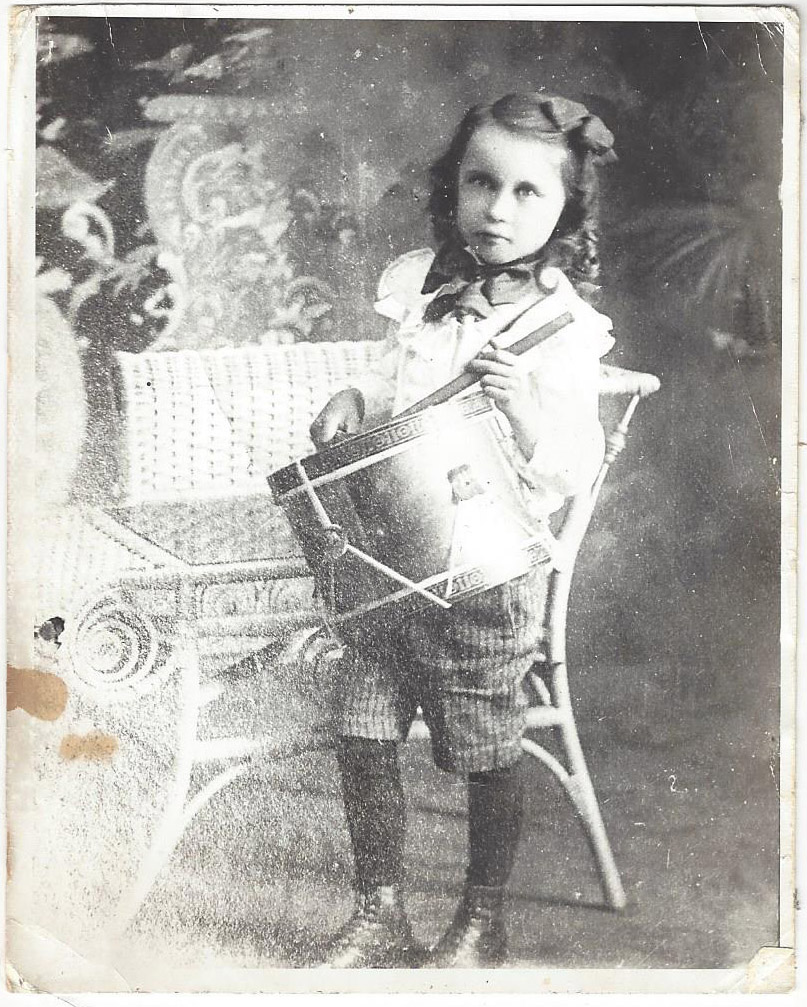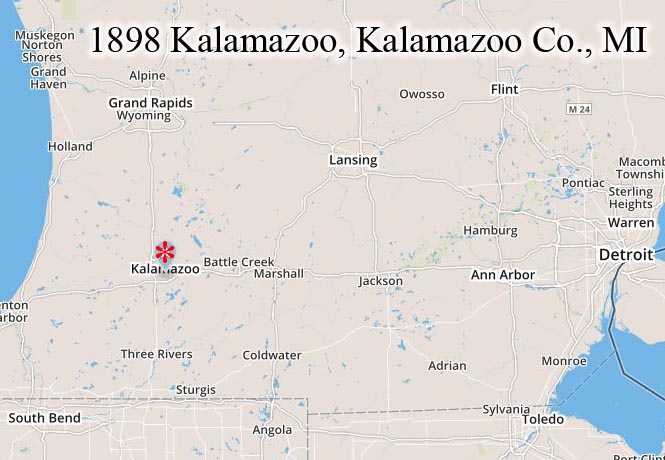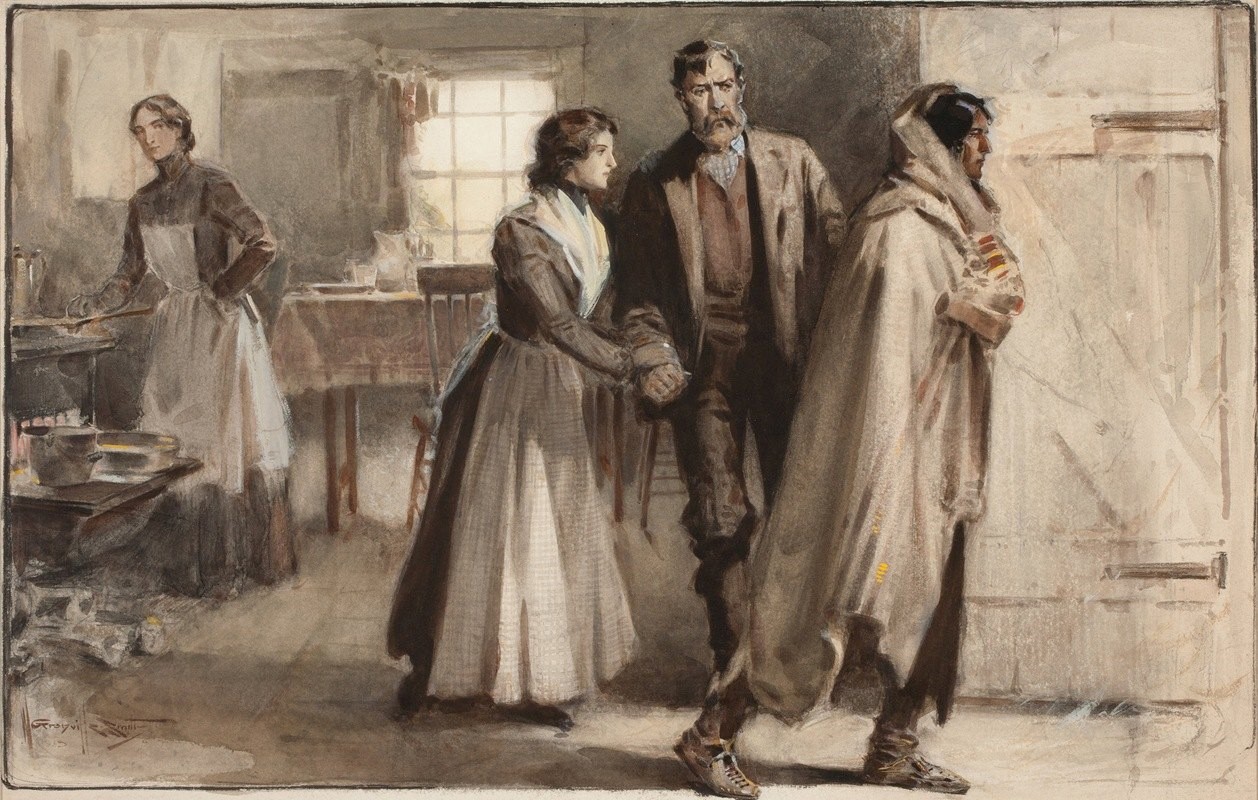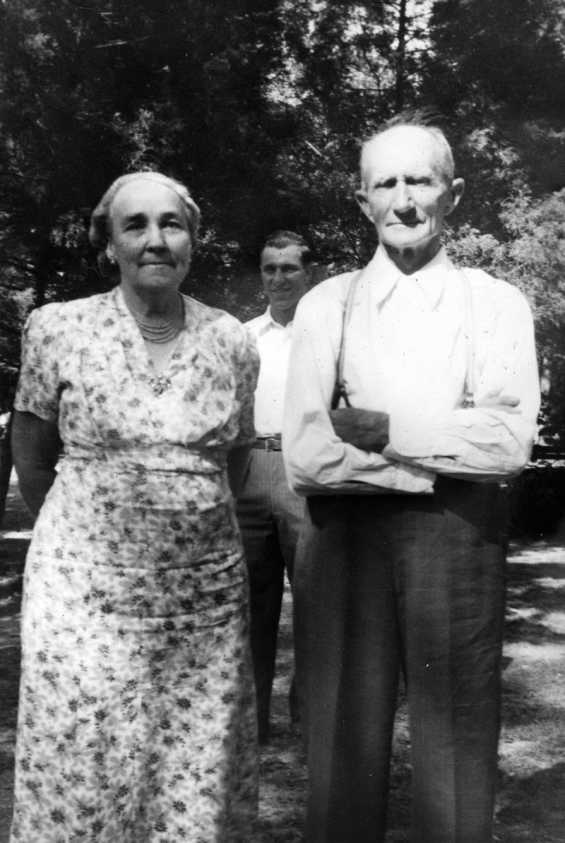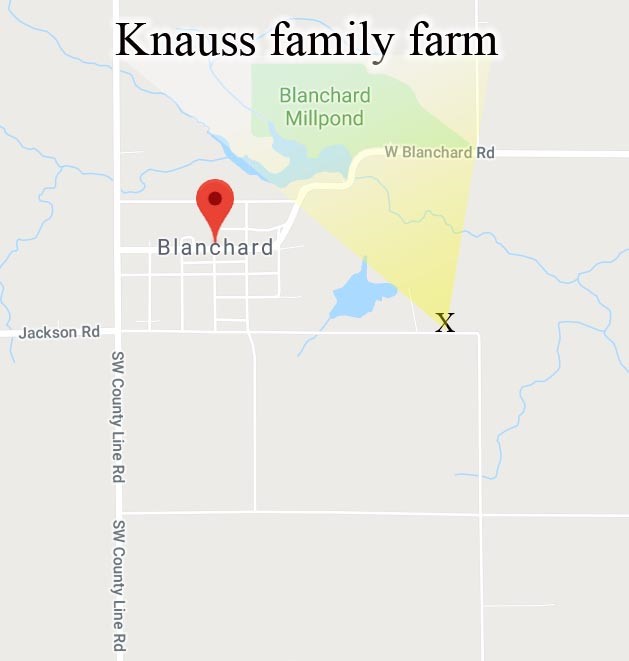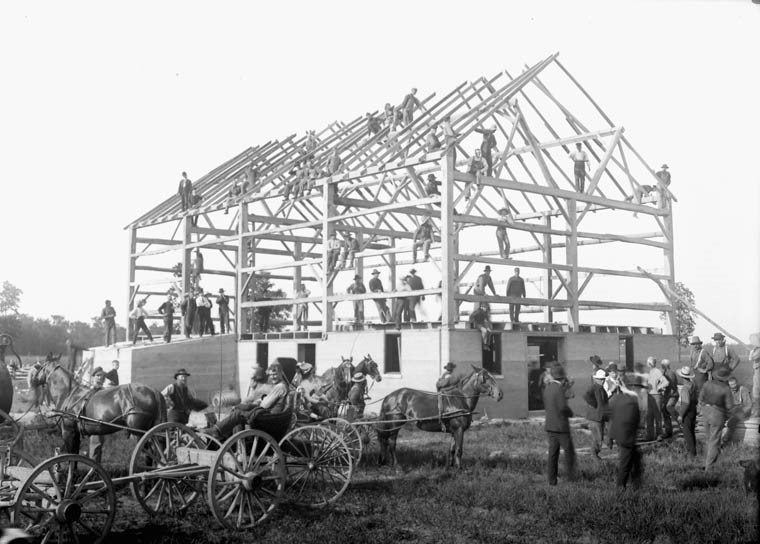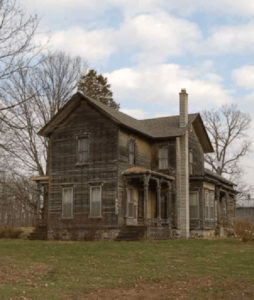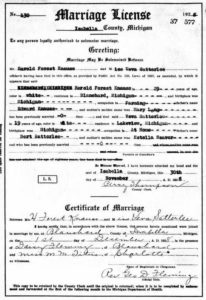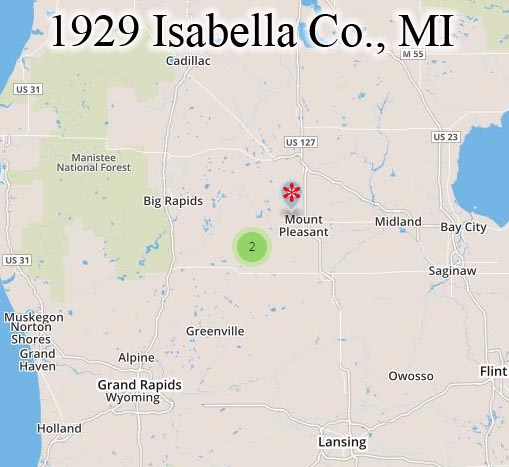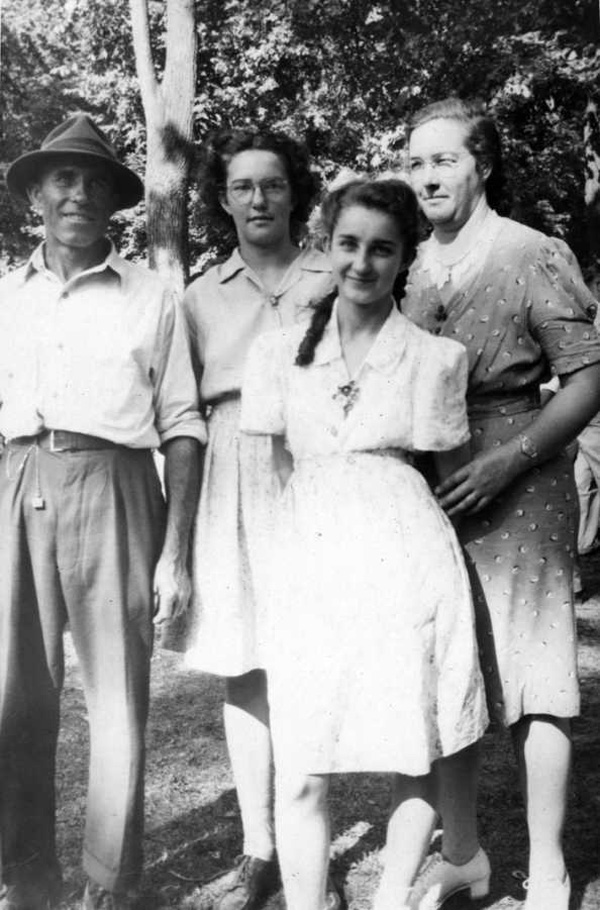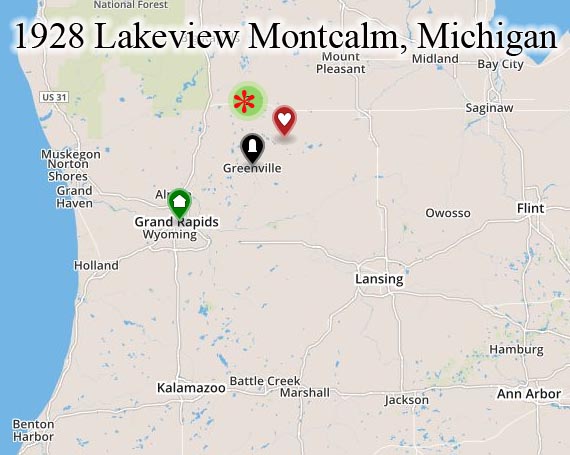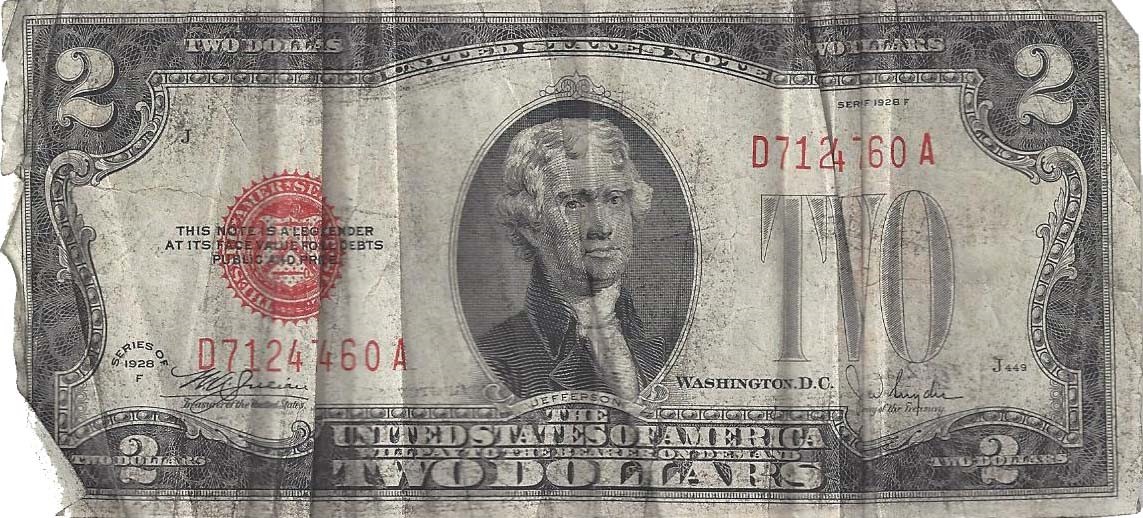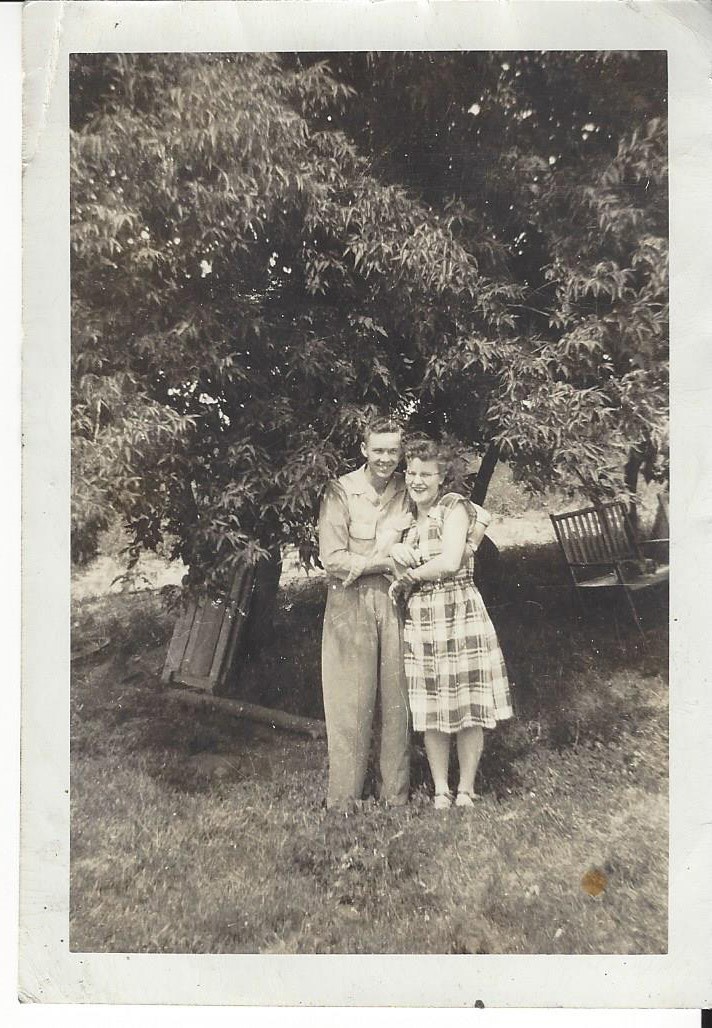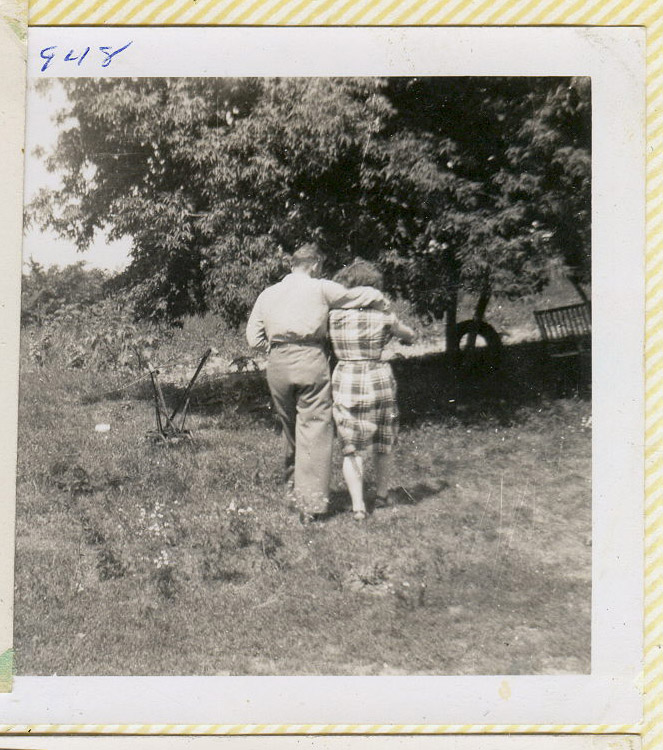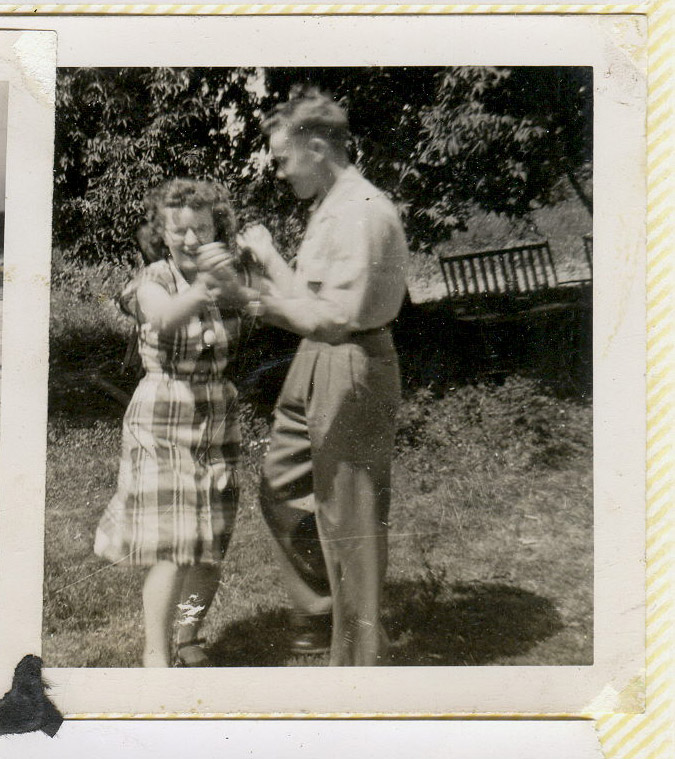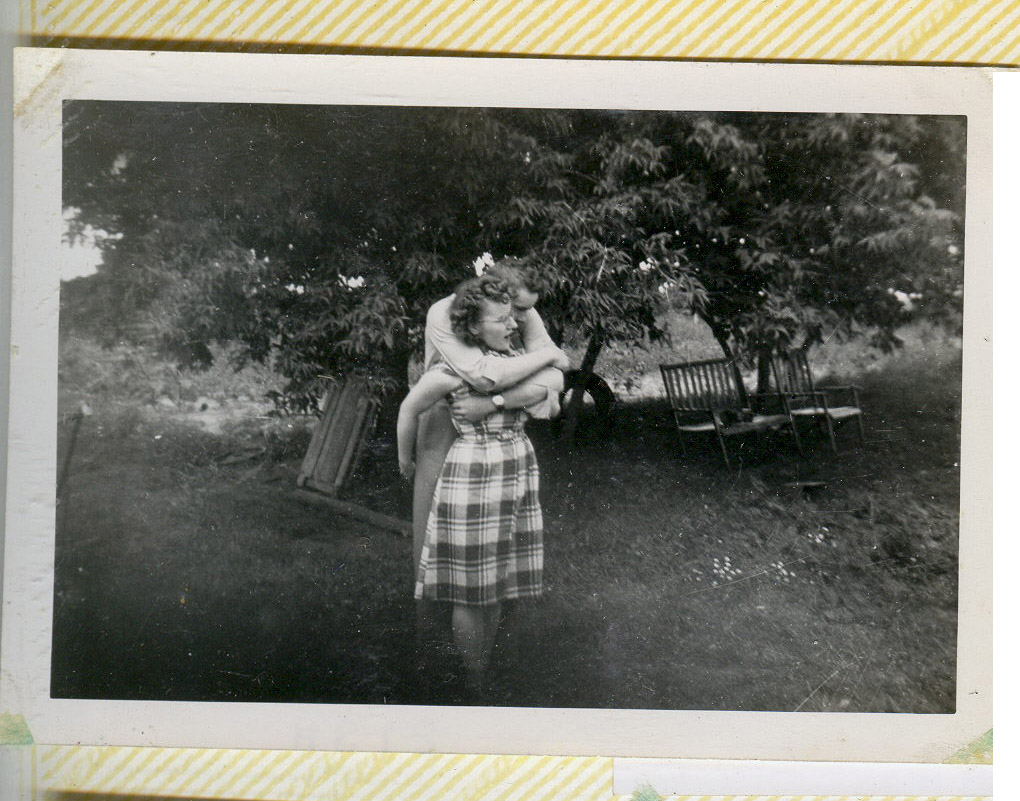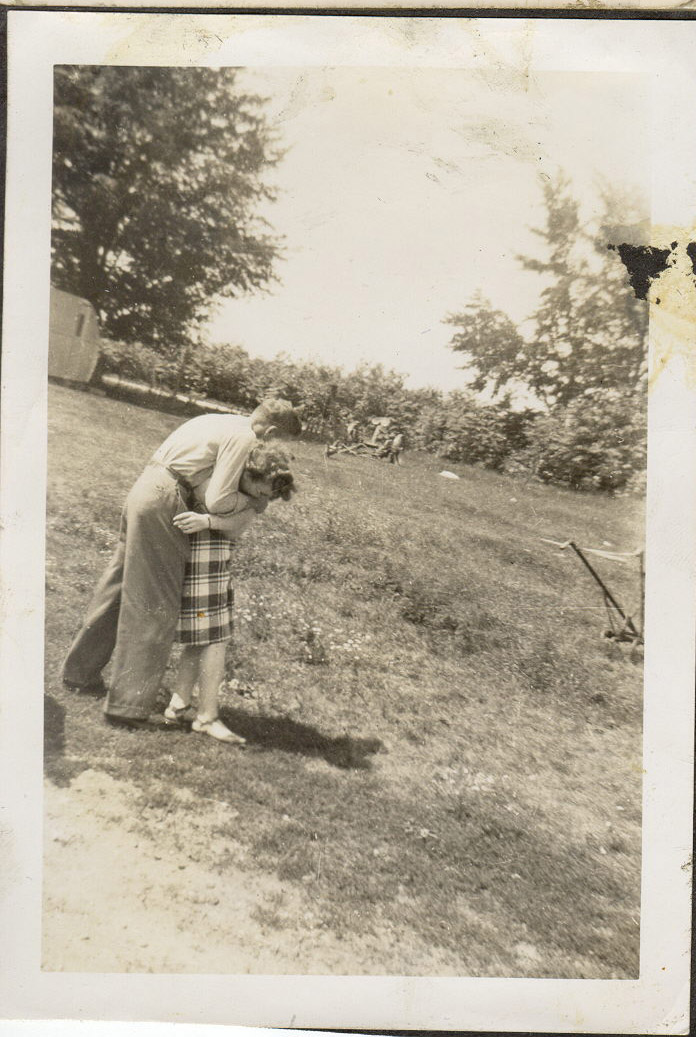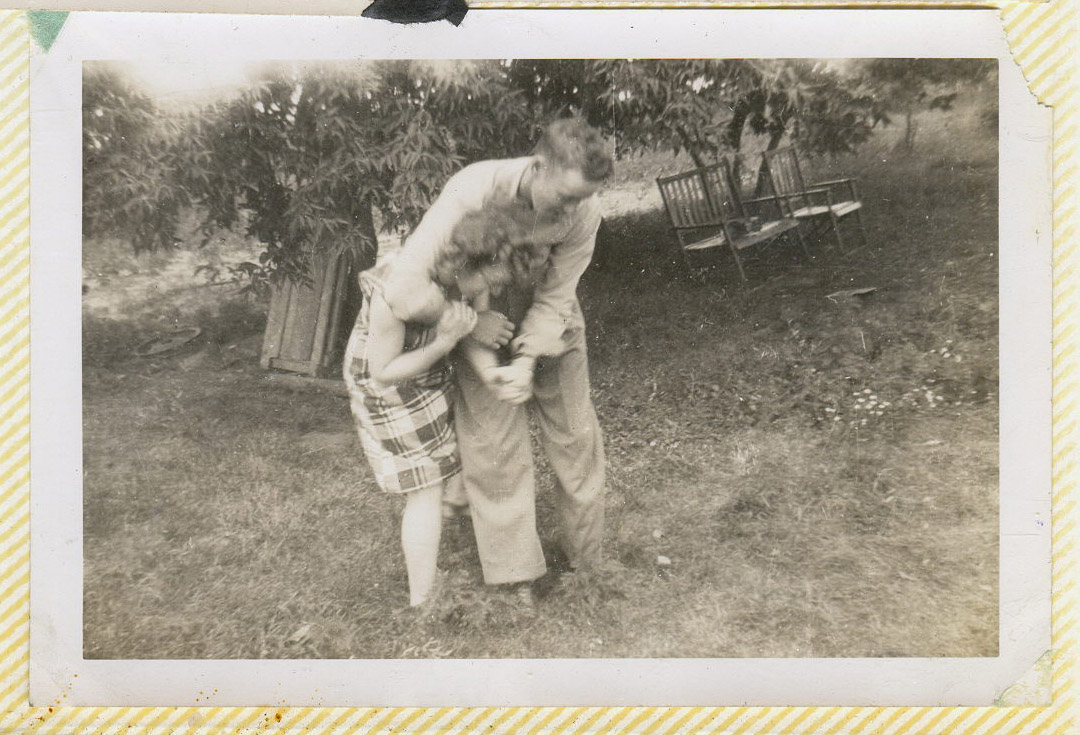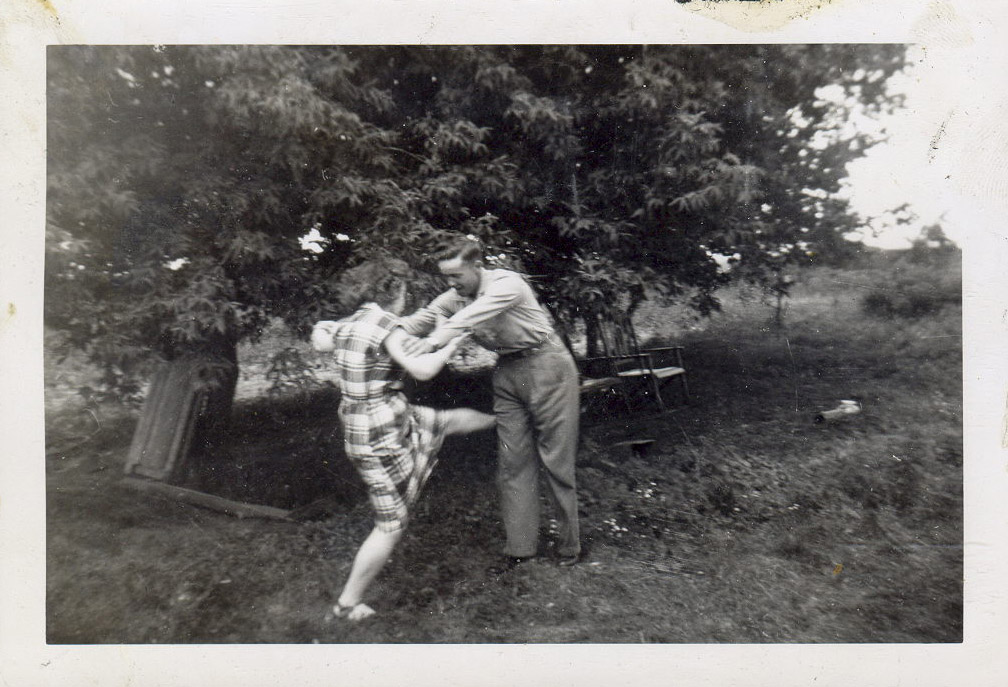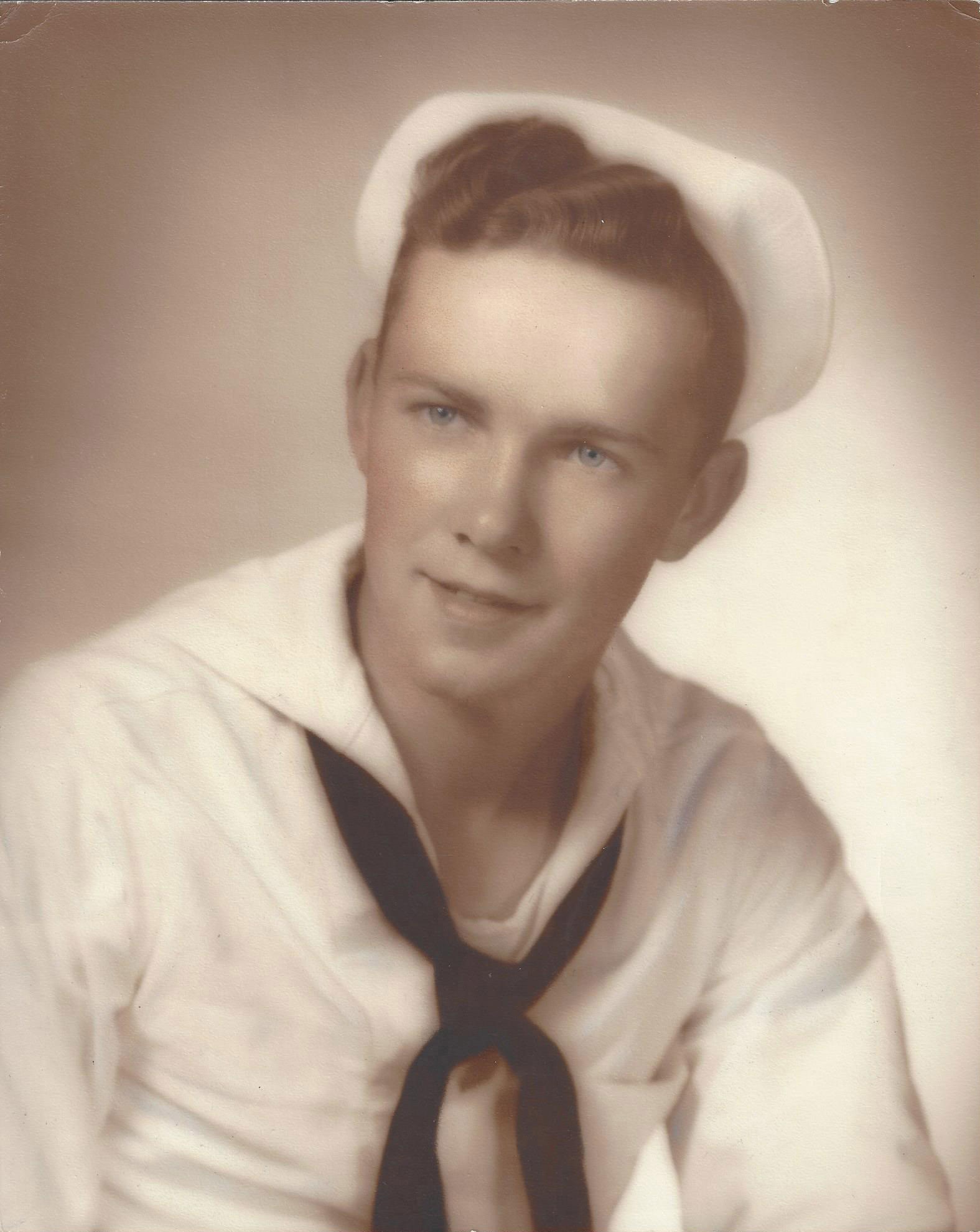Grandma talked about her pet, and she said, “Papa raised ducks to trade at the post, and when I was a young girl, I had one as a pet. One day I found it lying by the water, and when I went to pick it up, I could tell it was dead. Shock and anger took over me. Being a child without any logical reasoning, I looked along the shore, and the first thing I saw was a big bullfrog. When the rest of the family missed me and came looking for me, mama was the one who found me. There were over a dozen dead bullfrogs tossed onshore. She cleaned me off the best she could with her apron, and she fought against her uncontrollable laughter as we walked back to the cabin. At supper time that night, the entire family thanked me for the great frog leg dinner.”
Grandma said once, “When I got older, maybe about 5 or 6 years old, it was my twice-a-day chore to milk the cows. There were just a few to milk, it did not take long, and I loved the fresh milk. Sometimes they would fill a ten-quart pail of milk that I had to carry to the cabin. One night when I was very small, a neighbor came to visit just as I got done milking. As I was carrying the pale back to the cabin, he told me, Sis, I would think that cow would not know you from a bone-picker. It was seen to, that each of us did our part of the work, no kicking on child labor then.”
Milking the cows
There were other animals besides wolves that bothered cows, and the porcupine was one of the worst. They lived in the lower brush close to the ground that was easy for the cows to reach and eat. The cows could push their faces directly in the line of fire of the quills defending the porcupine. Unless the quills could be removed relatively easily without hurting the cow, it could starve, or it may have to be killed.
Grandma told a story, “When I was a young girl, about 12 years old, papa allowed me to bottle feed a young calf. The mother cow died when it was born, and papa had me blow my breath into its nose. From then on, the calf thought I was his mother.”
Grandma talked about her calf, “He was my pet, and we even let him sleep in the cabin with the family during its first winter. The calf was always the last one to sleep at night and the first one out in the morning. Because his milk came from me, the calf followed me when I was in the yard. Even when it was a fully-grown steer, if it saw me, it would come to me. When he walked breaking his way thru the brush foraging for food, he made quite a rustle, so Papa called him ‘Russell.’”
Russell the cow
Grandma went on telling her story, “One day, Russell had the bad misfortune to be on the south side of a porcupine heading north and took a direct hit in the face.”
Quills were stuck in a pathetic pattern around the wounded animal’s mouth when the family found him at the lean-to. “When he saw me, he came right to me next to the cabin. Papa came over and handed me his pliers and told me to see what I could do for Russell. Carefully as I could, I removed the first quill, and as I did, Russell flinched the only time. From then until I was done removing the last quill, the cow stood as still as a statue. The family felt sad later when papa sold Russell to a neighbor for a breading steer.”
Russell the breading steer
Edward was fighting sleep while listening to Mary tell her grandmother’s stories. He asked, “What did your grandma do when she was a kid?”
Mary told him what her grandma had said to her. “During the warmer months of the summer, it was the job of the children to gather wild grass from the dried-up swampland and store it for winter feed for the animals. We had so much fun running through the tall grass in the huckleberry swamps. The huckleberry bushes were twice as tall as papa and as big as our cabin. They were all full of big dark blue huckleberries ready for picking. The stain around our mouths and our blue tongues always gave us away on what we were doing while we were supposed to be working. There were other fruits for the picking in the forest like wild plums, wild strawberries, and wild grapes.”
Grandma went on to say, “In the early spring months, large trees would be cut down so the cows could browse on the tender branches for feed. This had to last them until the grasses started to grow, and sometimes the cows got a little thin in the flesh waiting. Papa burned all the trees he cut to clear more land for farming. Sometimes he had fires, as big as our cabin going all day and night to get rid of fallen trees.”
Tree falling with axes
Grandma told how they made candles. “We used rendered animal fat to make, by hand, tallow candles which were the only light we had at night other than an open fire. We molded the hot waxy animal fat in our hands around a small piece of cloth used for a wick. Sometimes we dipped wicks in and out of the hot fat that would cool quickly and harden. They were greasy and stinky, but you could see what you were doing in the dark if the wind was not blowing the flame out.”
Making tallow candles
Mary told Edward that back in grandma’s days, there was no running water in the house, and grandma said to her, “We got all our drinking water from a spring that was some distance from the house. I had to carry more buckets than I can count of water sloshing and spilling all over my dress from the spring to the cabin. Although it was a little walk, the water was cold and tasted really good. Even in the hottest part of the summer, the spring was the place you could always count on getting a cold drink. The water flowed fast enough all year that it did not freeze over in the coldest winter months. One early morning just after dawn in the winter, I met a deer at the spring. We scared each other, and we both ran away.”
A spring
Grandma said, “In the fifth year of living in that small cabin Papa with some help from some of the neighbors, dug a well close to the house. After a time, the old bucket we used to draw the water up from the bottom became covered with moss, and it gave the water a funny taste. Sometimes I would still walk down to the spring and get some fresh good tasting drinking water. The water from the well was nice and convenient, but it could not compare with the water from the spring.”
Well water
Grandma told me what it was like when she went to school. “Our schoolhouse was one mile north and one-half a mile east of our cabin. We usually walked that distance twice a day going and coming from school, but if papa had to go somewhere that day, we would get a ride with him in the lumber wagon. I still remembered falling out of it when I was younger, so I always asked to sit next to Papa on the seat.”
Grandma told another story. “One winter after a massive storm, the snow was piled up as high as the horse’s belly. We had a tough time walking in the deep powdery stuff, but we still tramped through it to school and back. There were no road snowplows back then.”
Early snow plow
The next day the blowing snow made it white-out conditions outside, and papa had to string a rope from the cabin to the lean-to. He walked along, hanging on to the line so he would not get lost in the blizzard. Even at high noon with the sun shining, you could not see but two feet in front of your face. It was very easy to get lost. The storm lasted four days, and before it was over, a strong nor’ easter wind blew the snow into large drifts that were as high as the roof of the cabin. Papa followed the rope he strung up the day before and dug a tunnel through the snow to reach the animals.
A winter morning digging out of the snow
When it got colder, all the snow froze, making the tunnel a stable path through the winter weather. It lasted for several weeks, giving us cover from the weather before it started to melt and collapse.”
Snow up to the roof
Grandma went on to say, “When the snow was too deep for the lumber wagon, papa made a bob-sled out of a big wooden shipping crate. He put skis on the bottom of the crate and pulled it along with the horses. Sometimes he would hitch up the team and take us all for a ride on the frozen water. When we got back, Mama had some hot broth and biscuits waiting for us. These are good memories of my childhood.”
Grandma always had another story to tell. “When the sun went down, we used our homemade candles for light in the cabin. When it was bedtime, Papa would shout, “Last call,” and he would escort us kids to the outhouse for the last time before morning. There would be a string of barefoot children dancing in line, waiting for their turn. You could hear the crickets and fight off the mosquitos in the summer and watch your breath freeze in the winter.
One of us was always saying, “Come on, hurry up, the rest of us have to go. Papa always told the boys not to get the seat wet. One of the boy’s chores was cutting up logs and keeping the firewood box next to the stove full. One of the girl’s chores was to clean the outhouse with lye, and I hated it when it was my turn.”
The outhouse
Edward had not said a word for a while, and when Mary looked down, she saw he was finally sleeping. After a whole day and night of being awake, she hoped he would get a little rest, and he did.
He would get a little rest
The Morning of the second day came early when Edward started coughing again. Mary gave him some more whiskey and honey, and it seemed to help him some.
When Mary sat down next to him on the bed, Edward asked, “Tell me more about what it was like for your grandma living back in pioneer times, Mama.”
Mary told Edward that her grandma said, “Every few weeks we had to take our wheat and corn to the mill so it could be ground into flour, and I was often my father’s companion on these trips.”
Water powered flour mill
There were few roads back then, and they were not kept clear, so the trip took some time. Sometimes they would have to stop and clear the brush from a fallen tree off the road. It was not safe to go any distance without a shovel and an ax to make your way. Sometimes the path would just be washed out, and they would have to pick a different direction to travel. Whether walking or riding horseback, any trip was a real journey.
Michigan vegetation 1800s
Grandma explained, “There were two large and very dense swamps between our cabin the flour mill near the trading post.”
To make these trails passable, large trees had been cut and thrown
down crossway on the path to make a log road, the settlers called ‘Crossway.’
Grandma continued saying, “The round bare logs made a bumpy ride, so for the safety of the eggs, one of us kids would walk behind the wagon carrying the basket. I would have never thought that someday there would be a fine gravel road through there, and we could travel in the wagon at speeds that surely would take your breath away.”
Northern hardwood swamp
The trip to the mill could not be made in one day, so they stayed with their closest neighbor as a guest for one night. Sometimes they would pick up things from the trading post for them and drop it off on the way back home. Strangers were always welcomed there, and they gave them breakfast in the morning before they left.
Grandma said, “Later on, a flour mill was built only eight miles from our cabin, then we could get there and back before the sun went down. It was so close my brothers could take a grain sack full of wheat, divide it in half, strung it across the horse’s back and ride on it like a saddle to the flour mill. Each time some of the flour went back to the mill to pay for the man that ground it.”
Between coughing and blowing his nose, Edward had just a few comments he said, “tell me more,” whenever his mother stopped speaking.
Mary tucked the blankets in around him and gave him a big kiss on the forehead. Then told him, “I have to save something for tomorrow, besides you need some sleep and so do I. So, you get some rest, and I will tell you more stories tomorrow, good night now.” Mary took one last look to see if he was ok before lying down for the night.
The third morning Edward was awake and ready to hear more about his great-grandmother’s stories from the past before Mary was out of bed. She said, “but Edward, the sun is not all the way up yet. Give me a few minutes to wake up.” Instead of laying there for a little bit longer, Mary got right up, ready to attend to her son’s needs and request.
Edward asked her a question, “how did all the members of the Knauss family know about each other back then when they all lived so far apart, mama?”
Mary told Edward that her grandma said, “there was a post office at the trading post, and 25 cents would always be saved for any letter that might be there waiting for us from the family. Back then, the receiver of the letter must pay the postage. The letter did not come in an envelope. It was written on a foolscap sheet of paper cut to the size of 8 x 13 and folded, so the address was put on the outside. Then it was sealed with wafers of wax.”
The trading post and post office
The old woman talked more about her childhood. “I always looked forward to Sunday when I got to put on my best clothes and go to church. The entire family took baths the night before, so everyone was feeling clean and eager to go hear God’s word be preached. The church was held in an old log cabin that had been abandoned by a well-to-do family that left the area. It was bigger than most people’s homes, one large room with a big fireplace. The walls had two real glass windows on each side and a solid door that locked. The benches people sat on were made of tree branches twelve or fifteen feet long with no backs.”
A log cabin church
Mary’s grandma had explained, “The church was four miles from home, we went nearly every Sabbath, and sometimes it would be necessary to walk the distance. The morning service began at 10 o’clock or about when everyone got there. After the service, there was Sabbath School, where the kids were divided up into age groups and men and women separately.
Sunday school
When the lesson time was over, each family provided themselves with lunch, and we all ate together. After the meal, we listened to another sermon, and at the end, church business was discussed with the congregation. We shared our Sabbath evenings in our home with the entire family singing hymns together.”
Still speaking about the church, grandma said, “Once a month at the church, we had a special service with an altar call. This time was for people young and old to come before the congregation and confess a sin or make a commitment to the Lord. I had my first altar call at the age of 14 when I gave my heart to the Lord Jesus. I remember how happy my Papa was to see me up there in front of everyone confessing my beliefs in the teaching from the Gospels.”
Grandma described church business, “There was no special choir,
everybody sang the hymns. The pastor received for his labor a gift from each family of whatever they could provide. It might be something they brought each week from their garden, or sometimes chickens or livestock would be donated for his service. One year I got to give one of my cat’s kittens to the pastor for a ‘mouser’ that could live at the church. Papa told me one time the people raised over $200 to give to the traveling Pastor.”
Sharing an old story, Grandma said, “When Papa first brought the family to Michigan, there was an old Indian woman that still lived in a Tepee next to the trading post. She sold many hand-made items to the people who came to the trading post, like carved wooden spoons, blankets, and pottery. The other Indians gave her the name of White Snow because she traded with the white settlers in the wintertime. When her tribe was forced to leave the Michigan territories and travel west, White Snow was left behind at the trading post because she was too old to make the trip.”
Old Indian woman
Grandma continued, “Papa also bought blankets and pottery from White Snow, and she taught him how to make sugar. The sugar bush was different in those days. It was a softwood tree called Basswood with large heart-shaped leaves. The trees were funny-looking with several trunks at the bottom. It was easy to collect the seeds and start more Basswood trees. Some people planted them around their cabins for shade from the summer sun.”
Mary’s grandma would make little buzzing sounds before she said, “There were always honeybees flying around its blossoms collecting nectar. If you carefully followed them through the trees, you could find where they kept their honey. Once a year at night, Papa would sneak out to the beehive and take a small portion of the honey cone and bring it back to the family. He told us you cannot get greedy with a bee’s honey, or he will move to someplace else. We made our sugar the way the old Indian woman taught him.”
Basswood flowers
Grandma explained, “Papa would make wooded spiels from branches of the Basswood bush. Then he used a hand size stone to drive them into the bark of the tree. The spiels acted like a spigot drawing the sap from the tree into an animal skin bag papa hung around the tree. Papa made large troughs of logs lined with Basswood leaves to catch any overflow of sap.”
Grandma said, “There were no pails back then, so when papa collected sap from many trees, he put it into barrels. Then he poured it in a large kettle over the fire and boiled it down to a thick syrup. The syrup was poured onto some Basswood leaves, then taken into the house and cool into a solid block. When it hardened, the leaves peeled right off, and a knife could be used to scrape sugar off the solid block. We made three to four hundred pounds of sap sugar a year, and it was the only sugar we ever had for years.”
Making sugar from Maple tree sap
Remembering when she was a little girl, Grandma said, “I have very fond memories of playing house with my sisters under the old sugar bush. There was beautiful green moss that covered the trees, and we would gather some up to make beds at the roots of a large Basswood tree. We pretended the dogs were our children and dressed them up in old clothes. My brothers never wanted to play house, but us girls had fun together. Papa set up a barrel under the eaves of the cabin to catch rainwater. Us girls used the water as pretend-tea, and we loved to play tea party. We used empty walnut shells for cups and leaves for saucers.”
Girls playing house
Grandma proclaimed with authority, “It is almost impossible for this generation to comprehend the privations that all our pioneer ancestors endured. Each family shared the poverty, felt the hardships and danger of trying to plant the banner of civilization and freedom for the following generation.
Courage and faith were their greatest strengths of these early settlers of Michigan. It should be a matter of pride to those who may claim it that our fathers and mothers were born in these log houses. They were sturdy and strong to lay for us a foundation which wind or storm cannot destroy. They made history to be proud of. It marks the character from which heroes are molded. Their privations and courage are ours, not for the asking but inborn, and it had come to us as our richest heritage.”
Mary sure could tell a good story. Each time she told one to Edward, he felt like he was right there with his mother at the time it really happened. He would always remember his mother telling what his great grandma had shared with her when she was a young girl. These stories about the Knauss family would remain clear and vivid in young Edward’s mind and throughout his adult life.
When Edward was 20 years old, he married Mary C Long, age 18, in 1896, and they lived on a farm in the Brady township, Pavilion Township area of Kalamazoo County. This area is east of Indian Lake and just north of Vicksburg.
Vicksburg Michigan
In 1898, their first child Harold Forest Knauss (1898 to 1983, grandfather), was born at their farm in Kalamazoo. Edward and Mary gave him the middle name of Forest so they could remember the trees of Michigan that once stood where only stumps remained.
Harold Forest Knauss
Harold Forest Knauss and place of birth
The following year Edward and Mary bought some woodland from the Indians south of Blanchard. It was in the spring when the rivers and streams all ran high. Edward purchased the land sight-unseen because he was not able to cross the waters because of high water. It was a month and a half before Edward and Mary could reach their new home with a wagon full of household goods.
Edward and Mary bought some land from the Indians
Mary and Edward Knauss – Blanchard
They had a barn and house-raising bee, and the local community of Blanchard turned out to help. So many neighbors came that the work went fast, and the structures went up in record time. Edward worked out a deal with the local sawmill, allowing them to cut down trees on his farm in return for free lumber to build his farmhouse and barn.
Library 1 – 19
Edward said when he thanked all the people that came to help him, “I would have never been able to afford to build a two-story house on what a farmer makes.”
Edward also donated lumber for the construction of a parsonage at the church. The local church did not have a permanent pastor, and the community thought they might attract a pastor to come and stay here if they could offer a free place to live next door to the church. Everyone that could, gave what they could, to help with the building project. Labor was the greatest gift someone could give, and their time was appreciated by all.
Barn raising
Two story farm house
Edward always felt bad about how many trees had to be fallen to make his farm. He did save a few of the big ones from the lumberjack’s ax for fence rows between fields and to mark off the boundary of his property. Edward still had 20 acres of standing timber. When they were all settled in, they had more time together as a family.
Forest’s sister, Greta Irene, was born in 1904 when Forest was 6 years old, and his sister Gladys Elizabeth was born in 1914 when he was 16 years old. All the children were very close to each other. The siblings remained in close contact for the rest of their lives.
When Forest was 31 years old, he married Viva S Satterlee, 20 years old in 1929 in Blanchard, and they had three children during their marriage. Raymond Lee Knauss (1929 to 2006, father) was born on the 4th of July 1929.
Forest and Viva Knauss’s marriage license
Raymond Lee Knauss place of birth
His sister, Violet May, was born in 1931, and Mabel Louise was born in 1933.
Harold Forest, Mabel Louise, Violet May, and Viva S. Knauss
Raymond Lee Knauss married Caroline June Ostrander (1928 to 2004, mother) when he was 19, and she was 20 years old. Their parents did not give the approval that the couple had hoped for, so they ran off to Indiana and on July 24, 1948, and got married. Raymond was in the U.S. Navy, and Caroline was a nurse at a hospital in Newfoundland when they first met.
Caroline June Ostrander place of birth
They were astonished when they found out not only were they both from Michigan, but Raymond came from Blanchard, and Caroline came from Lakeview, which was only a few miles apart. It was a for sure thing that they would be attracted to each other and would fall in love. When Raymond and Caroline were married, they both put a two-dollar bill in their wallet to start saving for a life together.
Caroline’s two-dollar bill
Raymond Lee Knauss and Caroline June Ostrander 1948
Raymond Lee Knauss and Caroline June Ostrander 1948
Years later, looking at these pictures from 1948 that shows how abusive Raymond was to Caroline, my mother. You would think that she would have known better than to have anything to do with this ruffian. But, where would I be? You can see him manhandling her, and she is fighting back. No wonder she ended up hating this man and me for looking just like him.
When Raymond and Caroline were first married, they lived in a little blue trailer which they parked on a lot they bought from the city of Greenville. Raymond was a carpenter and jack of all trades. Then over the next two years, he built them a house. Caroline worked at the hospital in Greenville for a while, then took a job working for a doctor in his private practice. She ended up working for this doctor for over 30 years. When Raymond got out of the Navy at the end of WW II, he was able to go full time and finish the house. It was a sturdy, well-built structure and a perfect place to call home.
Raymond Knauss

